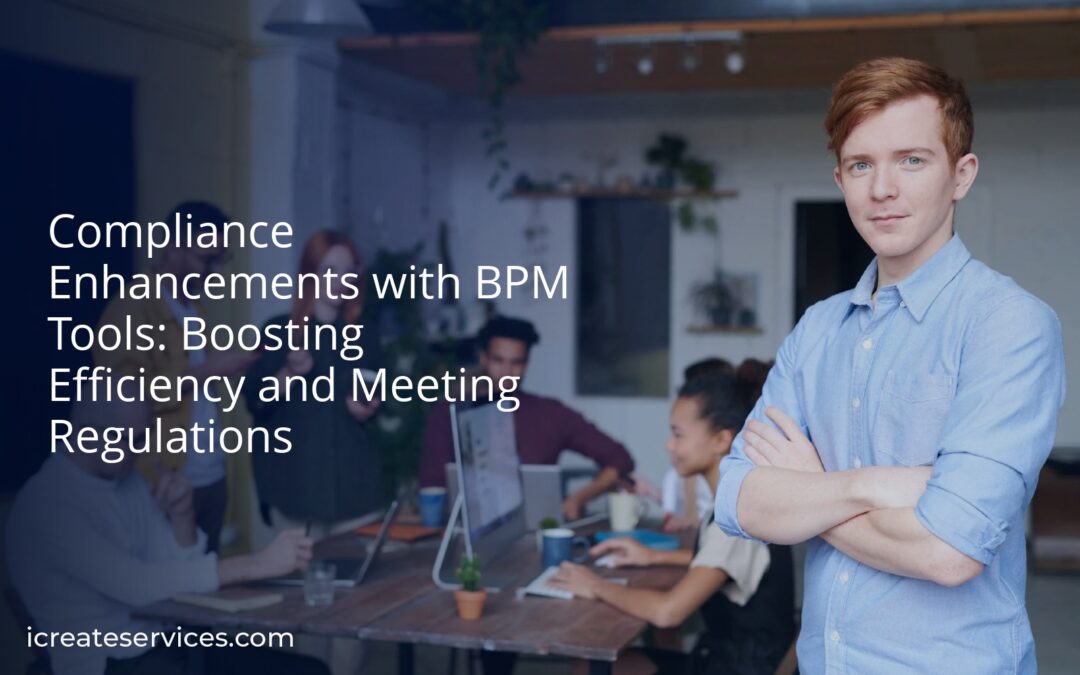Understanding Compliance and BPM Tools
What Is Compliance?
Compliance means adhering to laws, regulations, guidelines, and specifications relevant to an organization’s operations. Non-compliance can result in legal penalties, financial forfeitures, and reputational damage. Industries such as healthcare, finance, and manufacturing have stringent regulations to ensure safety, privacy, and quality standards are maintained.
Overview of BPM Tools
Business Process Management (BPM) tools facilitate the design, analysis, execution, monitoring, and optimization of business processes. These tools help in automating repetitive tasks, modeling workflows, and integrating various systems. By implementing BPM tools, organizations can achieve improved efficiency, greater transparency, and enhanced compliance with regulatory standards.
Key Compliance Enhancements with BPM Tools
BPM tools provide significant improvements in ensuring regulatory compliance. These tools streamline various compliance processes, support transparency, and mitigate operational risks.
Automating Compliance Processes
Automating compliance processes with BPM tools eliminates manual tasks that often lead to errors. Through automation, BPM tools ensure that compliance tasks like documentation, reporting, and audits follow regulatory requirements precisely. For example, automated audit trails record every transaction, making it easy to review and verify compliance adherence.
Enhancing Transparency and Accountability
BPM tools enhance transparency and accountability by offering real-time monitoring and reporting capabilities. These tools provide stakeholders with easy access to critical compliance data, enabling them to track the status of compliance activities. For instance, dashboards and reports display key performance indicators (KPIs), helping us identify and address compliance gaps promptly.
Reducing Operational Risks
Reducing operational risks is another crucial enhancement provided by BPM tools. These tools standardize processes, ensuring consistency and minimizing the chances of non-compliance. When compliance workflows are consistently followed, the risk of regulatory breaches decreases. Risk management modules within BPM tools can identify potential risks early, allowing us to implement corrective measures proactively.
Industry Applications and Case Studies
Compliance enhancements with BPM tools impact various industries significantly.
Healthcare
In healthcare, BPM tools streamline compliance with regulations like HIPAA and HITECH. Hospitals use these tools for patient data management, ensuring privacy and security while reducing manual errors. For example, a hospital implemented BPM and achieved a 30% reduction in compliance-related incidents, improving patient trust and operational efficiency.
Financial Services
In financial services, BPM tools enhance adherence to standards like SOX and AML. These tools help banks automate reporting and monitor transactions in real time. One bank reduced compliance costs by 25%, leveraging BPM to minimize fraudulent activities and meet regulatory requirements consistently.
Manufacturing
In manufacturing, BPM tools maintain quality standards and ensure compliance with ISO and OSHA regulations. Factories use them for documentation and safety audits. A large manufacturer using BPM reported a 40% decrease in non-compliance incidents, enhancing both product quality and worker safety.
These case studies illustrate how BPM tools drive compliance improvements across multiple sectors, leading to better outcomes and operational excellence.
Choosing the Right BPM Tool for Compliance
Selecting the ideal BPM tool ensures regulatory adherence across different industries. Let’s explore the key features and vendor support aspects to consider.
Key Features to Look For
Certain features enhance compliance within BPM tools:
- Automated Reporting: Generates mandatory reports automatically, ensuring timely submissions.
- Audit Trails: Tracks all changes within processes, providing transparency and accountability.
- Role-Based Access Control: Limits access based on roles, protecting sensitive information.
- Compliance Templates: Offers pre-configured templates for industry-specific regulations, simplifying setup.
- Integration Capabilities: Connects seamlessly with existing systems, fostering smoother operations and data consistency.
- Training Programs: Provides in-depth training for users, enhancing tool proficiency and regulatory compliance.
- Documentation and Guides: Supplies extensive manuals and best practice guides, aiding in quicker problem resolution.
- Regular Updates: Offers timely software updates, ensuring tools remain current with evolving regulations.
- Customer Support: Delivers reliable and accessible support to address issues promptly.
- Community Engagement: Fosters a strong user community for peer support and shared insights.
Future Trends in BPM and Compliance
The BPM landscape continually evolves to meet stringent regulatory standards. Emerging trends focus on integrating advanced technologies and adapting to regulatory changes.
AI and Machine Learning Integration
Incorporating AI and machine learning into BPM tools enhances compliance management. AI algorithms analyze vast datasets, identifying patterns and anomalies that might indicate compliance issues. Machine learning models predict potential non-compliance scenarios, allowing preemptive actions.
For example, healthcare organizations use AI-based BPM tools to monitor patient data for compliance with HIPAA. Financial institutions deploy machine learning to detect fraudulent transactions and ensure adherence to SOX requirements. These integrations improve real-time decision-making and reduce manual intervention.
Regulatory Changes and Adaptations
BPM tools must be adaptable to ever-changing regulations. Compliance requirements like GDPR, CCPA, and new industry-specific standards constantly evolve. BPM solutions need capabilities to update workflows quickly to stay compliant.
For instance, manufacturing firms must adjust their processes to meet updated ISO standards. Financial services need to adapt BPM tools to comply with new anti-money laundering directives. These tools ensure businesses remain compliant without disrupting operations.
Conclusion
Adopting BPM tools is crucial for maintaining compliance across various industries. These tools not only streamline operations but also ensure adherence to ever-evolving regulations. The integration of AI and machine learning further enhances our ability to predict and manage compliance issues. By choosing the right BPM tool and investing in proper training and support, we can stay ahead of regulatory changes and maintain high standards of quality and efficiency. As regulations like GDPR and CCPA continue to evolve, our commitment to leveraging advanced BPM tools will help us navigate the complexities of compliance seamlessly.
- Demystifying Fuel Test Procedures and Standards - January 16, 2025
- The Benefits of SAP Invoice Management in Financial Processes - December 4, 2024
- Enterprise Software for Comprehensive Risk Management - July 29, 2024




